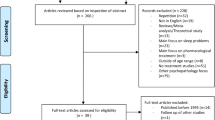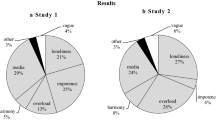Abstract
The subjective ratings of 21 nighttime-fearful children to short phrases with nighttime-fearful content were compared with the ratings of 21 children who exhibited little or no fear at nighttime. Coping responses and parental reports of nighttime fear behavior were also compared. Overall, children reported using self-control more than the other coping categories of social support: clinging to inanimate objects; avoidance or escape — control over inanimate environment; and avoidance or escape — control over others. Fearful children reported more coping behaviors than nonfearful children. Children's reports indicated that the nighttime fear category of security — personal life, loss, or safety was the most highly feared category by all groups. Nighttime fearful children rated as more fearful the categories of imaginal-numinous, inherent characteristics, and the dark than did the non-nighttime-fearful children. The categories of security — personal life, loss, and safety; security — separation or loss of others; dreams; and neutral failed to differentiate the two groups.
Similar content being viewed by others
References
Bauer, D. (1976). An exploratory study of developmental changes in children's fears.Journal of Child Psychology and Psychiatry, 17 69–74.
Costello, C. (1971). Anxiety and the persisting novelty of input from the autonomic nervous system.Behavior Therapy, 2 321–333.
Epstein, S. (1972). The nature of anxiety with emphasis upon its relationship to expectancy. In C. C. Spielberger (Ed.),Anxiety: Current trends in theory and research (Vol. 1). New York: Academic Press.
Fenichel, O. (1945).The psychoanalytic theory of neurosis. New York: W. W. Norton.
Graziano, A. M., DeGiovanni, I. S., & Garcia, K. A. (1979). Behavioral treatment of children's fears: A review.Psychological Bulletin, 86(4), 804–830.
Graziano, A. M., & Mooney, K. C. (1980). Family self-control instruction for children's nighttime fear reductionJournal of Consulting and Clinical Psychology, 48(2), 206–213.
Lang, P. J. (1979). A bio-information theory of emotional imagey.Psychophysiology, 16 495–511.
Mooney, K. C., & Graziano, A. M. (1980).Children's nighttime fears: Parent and child correspondence on normative measures. Paper presented at the American Psychological Association, Montreal.
Author information
Authors and Affiliations
Additional information
I would like to thank Anthony Graziano for his invaluable contributions to this research.
Rights and permissions
About this article
Cite this article
Mooney, K.C. Children's nighttime fears: Ratings of content and coping behaviors. Cogn Ther Res 9, 309–319 (1985). https://doi.org/10.1007/BF01183850
Issue Date:
DOI: https://doi.org/10.1007/BF01183850




